As COVID Vaccines Roll Out in MENA Region, Infection Rates Drop Sharply
The Israeli experience gives hope that while new waves of infection may follow, they won’t be as lethal
Over the past week, 332,868 new confirmed cases of COVID-19 infection were reported in the 27 MENA countries and territories tracked by The Media Line. The number of new cases the previous week was similar, though about 1% lower. But compared to a few months ago, the new infection rate has dropped sharply. For example, in the week from September 2 to September 9, the region saw 509,642 new cases – 53% more than this week.
Turkey accounts for 58%, and Iran 24%, of this week’s confirmed new cases in the region.
The dropping COVID infection numbers seen in many countries seem to be largely a result of successful vaccination campaigns.
In Oman, for example, the vaccination campaign stepped into high gear around May 17. By October 23, 3.07 million people (58.68% of the population) had received at least one dose of the vaccine. The number that received two doses stood at 2.61 million – 50.06% of the population.
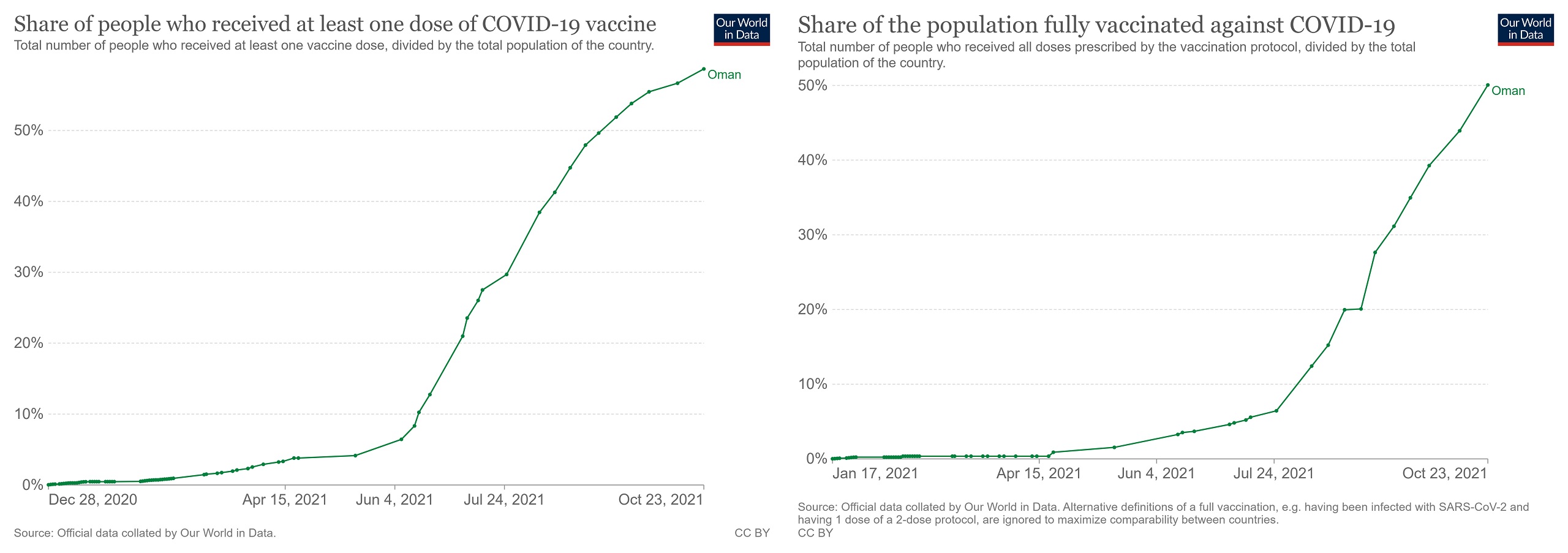
After May 17, the number of new cases initially continued to rise, reaching about 2,000 new daily cases (calculated as a seven-day rolling average) in late June and early July. That was expected. It takes time for a vaccine to provide full protection, and the rollout of inoculations takes time, as well. But from the beginning of July, the drop in infections was precipitous; the country is now experiencing between 0 and about 50 new cases per day.
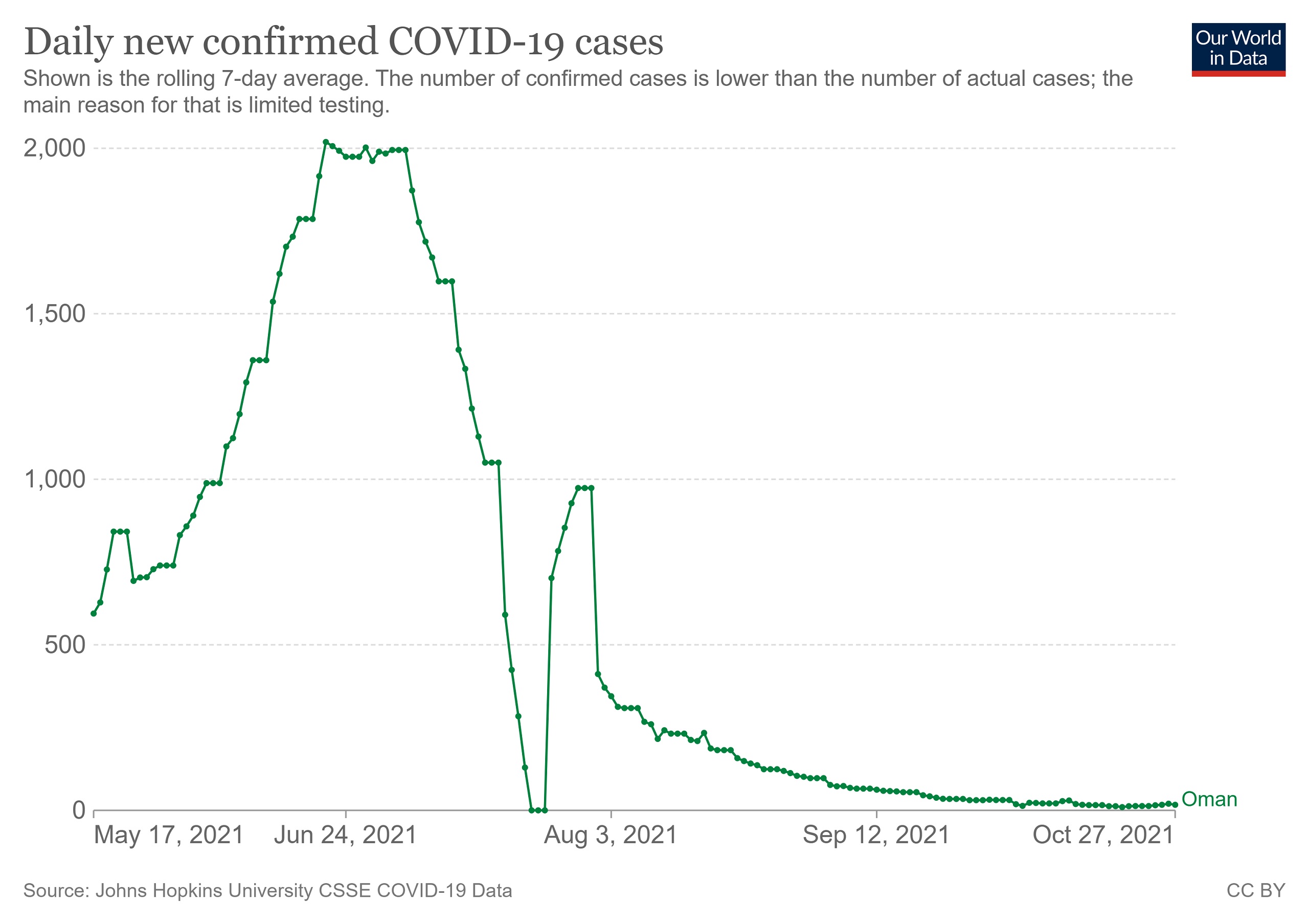
In the United Arab Emirates, the vaccine rollout got underway in early January. By October 26, 9.61 million people (96.22% of the population) had received at least one dose, and 8.6 million people (86.12% of the population) were fully vaccinated.
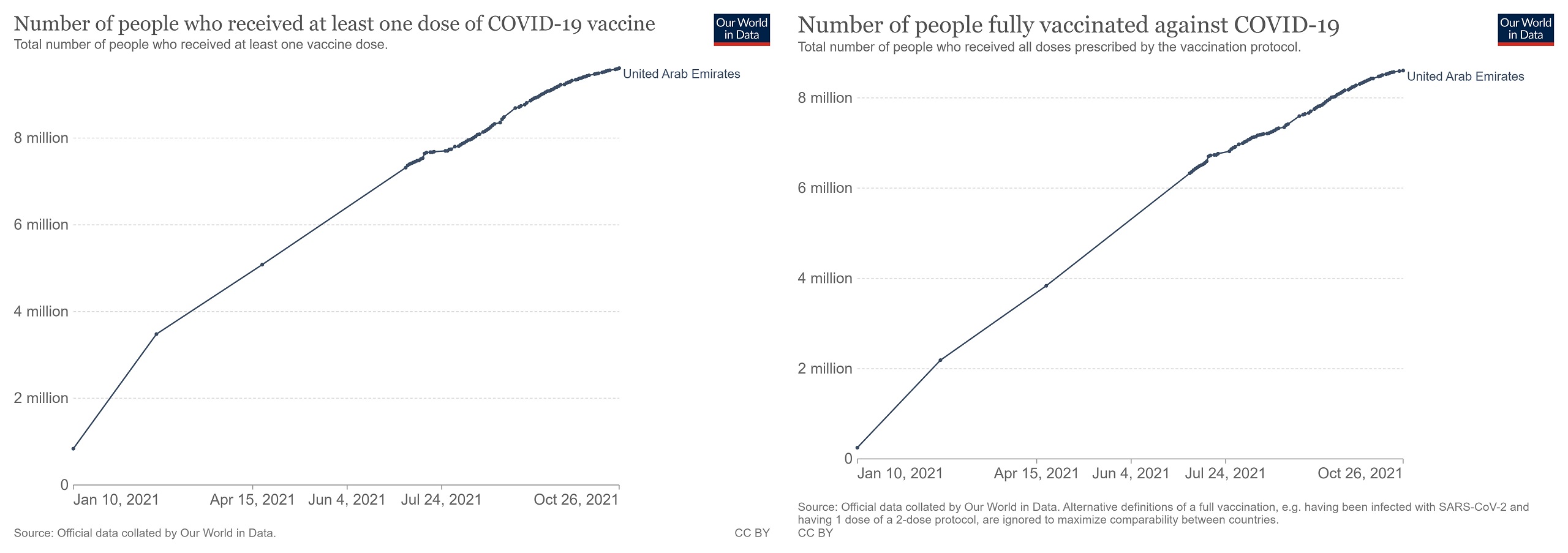
The result was similar: The number of new cases continued to rise for a few weeks, and then dropped sharply.
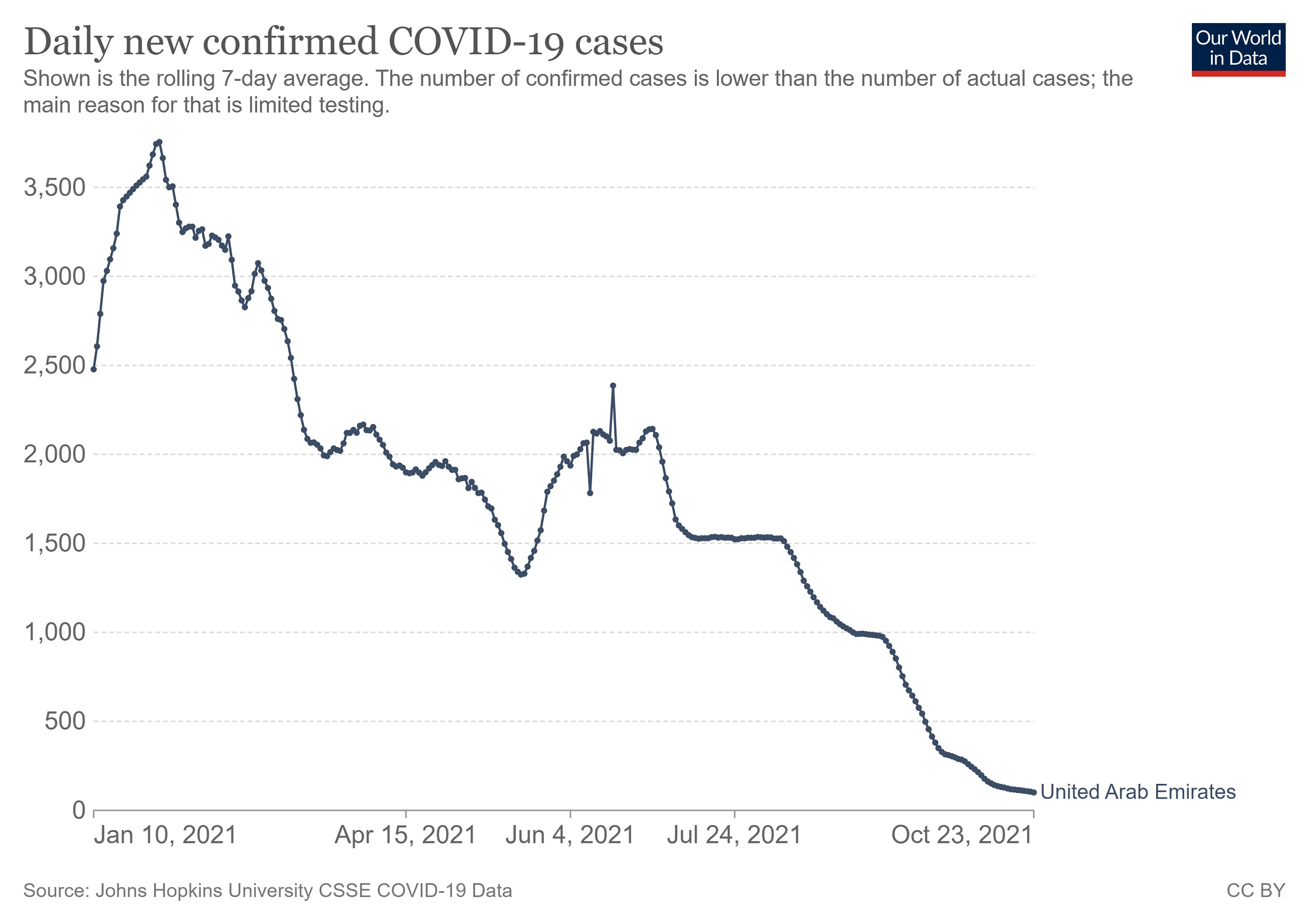
In Israel, vaccines began to be distributed in mid-December 2020. By October 23, 70.74% of the population had received at least one dose, 65% had been vaccinated twice, and 44.35% had also gotten the booster shot.

There, the experience was somewhat different. The country did see a short initial rise in cases followed by a steep decline. But then, another wave of infection – this time, dominated by the delta variant of the virus – overtook the country.
While the earlier vaccinations, which lose efficacy over time, couldn’t prevent the delta wave, the death toll during that wave was significantly lower than during the previous wave.
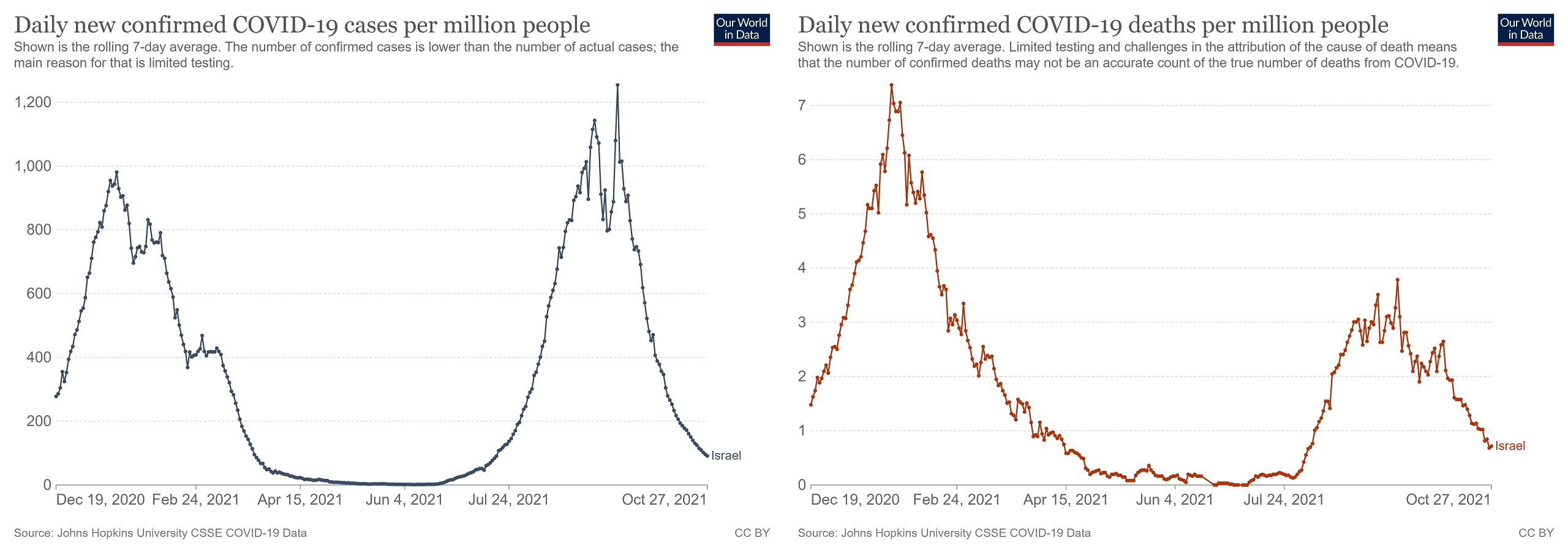
In Bahrain, vaccinations began around the same time the Israeli campaign began, but were rolled out more slowly than in Israel. In three months, Israel gave almost 60% of its population at least one dose. Bahrain, in the same period, managed to vaccinate less than 25% of its population.
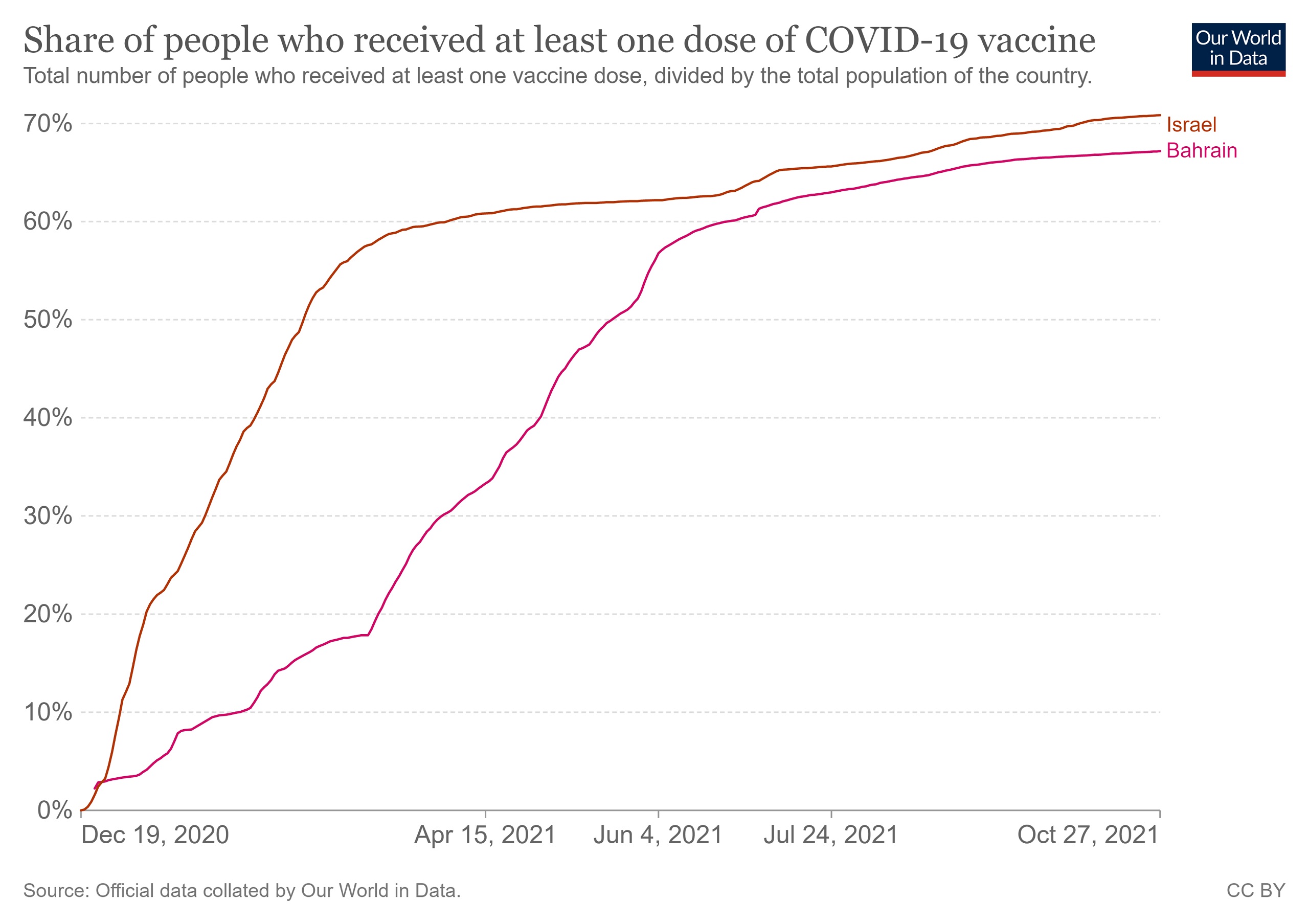
Perhaps as a result of the slow rollout, Bahrain did not see the same quick drop in new infections; instead, the infection rate continued to rise sharply, hitting a peak on May 29 – a week after the country reached a 50% vaccination level – and then dropped sharply and remained low.
The daily death toll in Bahrain peaked on June 6, unsurprisingly around a week after the daily infection rate peak, and then also dropped sharply and remained low.
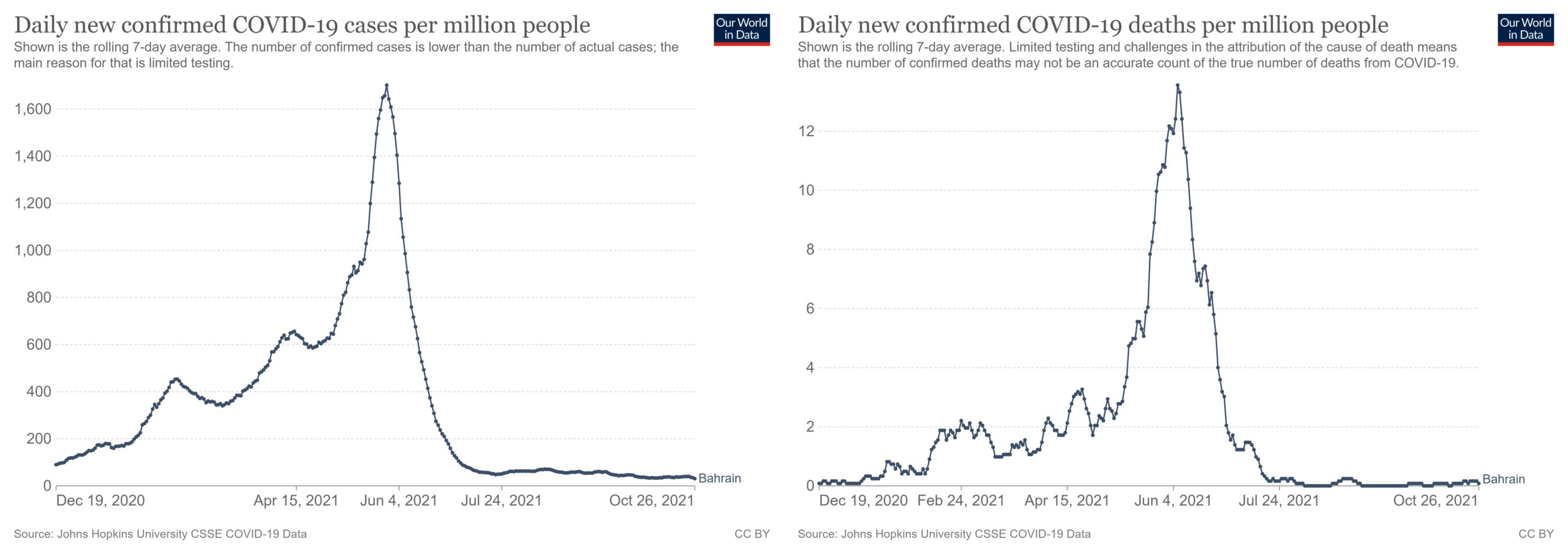
Here are the latest COVID-19 numbers for the Middle East and North Africa as of 8 pm Greenwich Mean Time (UTC±0) on Thursday.
| Country | Confirmed Cases | Deaths | Recovered | Active Cases |
| Afghanistan | 156,166 | 7,268 | 128,573 | 20,325 |
| Algeria | 206,160 | 5,907 | 141,468 | 58,785 |
| Bahrain | 276,685 | 1,393 | 274,730 | 562 |
| Cyprus | 122,295 | 572 | 90,755 | 30,968 |
| Djibouti | 13,472 | 181 | 13,228 | 63 |
| Egypt | 327,286 | 18,428 | 276,358 | 32,500 |
| Iran | 5,899,509 | 125,875 | 5,468,620 | 305,014 |
| Iraq | 2,052,123 | 23,083 | 1,996,126 | 32,914 |
| Israel | 1,325,496 | 8,073 | 1,307,148 | 10,275 |
| Jordan | 858,342 | 11,000 | 827,523 | 19,819 |
| Kuwait | 412,619 | 2,461 | 409,756 | 402 |
| Lebanon | 639,332 | 8,472 | 613,968 | 16,892 |
| Libya | 356,086 | 5,061 | 293,779 | 57,246 |
| Mauritania | 37,094 | 792 | 35,771 | 531 |
| Morocco | 945,201 | 14,647 | 925,434 | 5,120 |
| Oman | 304,241 | 4,111 | 299,580 | 550 |
| Pakistan | 1,271,027 | 28,414 | 1,219,174 | 23,439 |
| Palestinian Territories | 422,641 | 4,395 | 411,884 | 6,362 |
| Qatar | 238,950 | 609 | 237,225 | 1,116 |
| Saudi Arabia | 548,474 | 8,788 | 537,453 | 2,233 |
| Somalia | 21,269 | 1,180 | 9,927 | 10,162 |
| Sudan | 40,238 | 3,099 | 32,905 | 4,234 |
| Syria | 42,351 | 2,534 | 26,016 | 13,801 |
| Tunisia | 712,139 | 25,221 | 685,570 | 1,348 |
| Turkey | 7,936,007 | 69,769 | 7,376,821 | 489,417 |
| United Arab Emirates | 739,654 | 2,135 | 733,782 | 3,737 |
| Yemen | 9,751 | 1,874 | 6,341 | 1,536 |
| Total | 25,914,608 | 385,342 | 24,379,915 | 1,149,351 |


